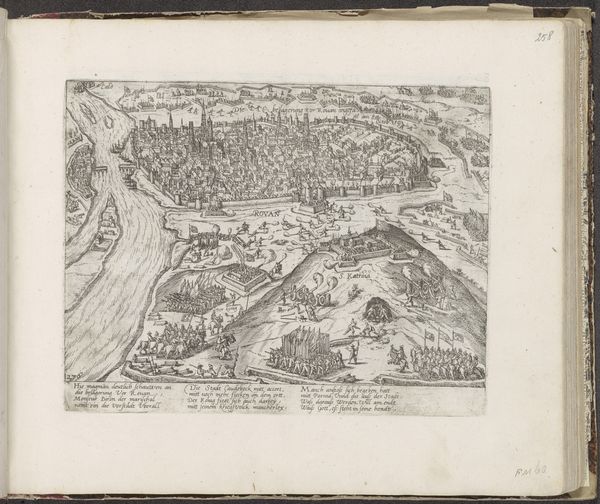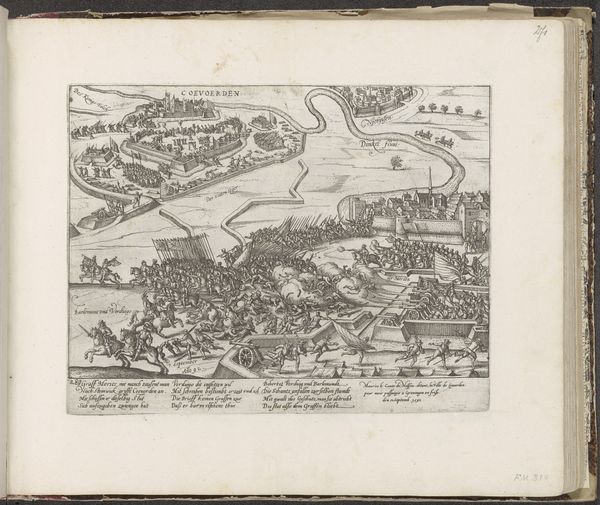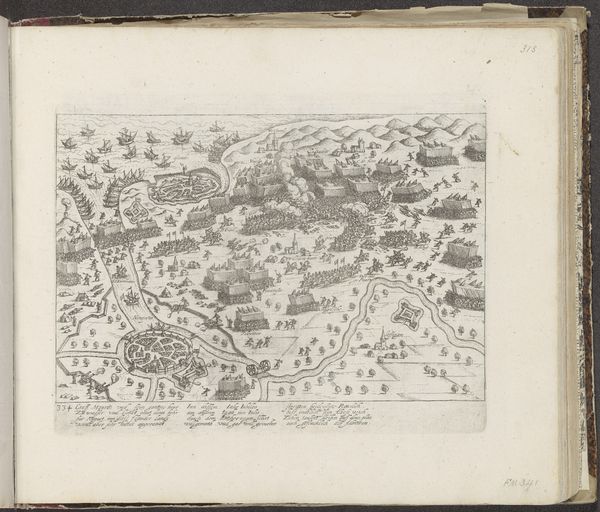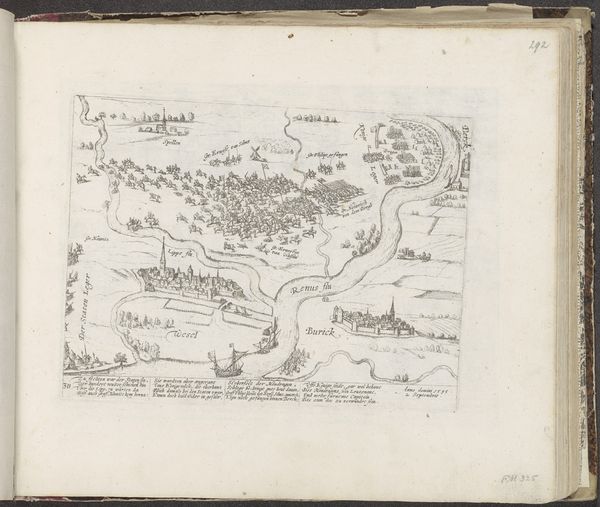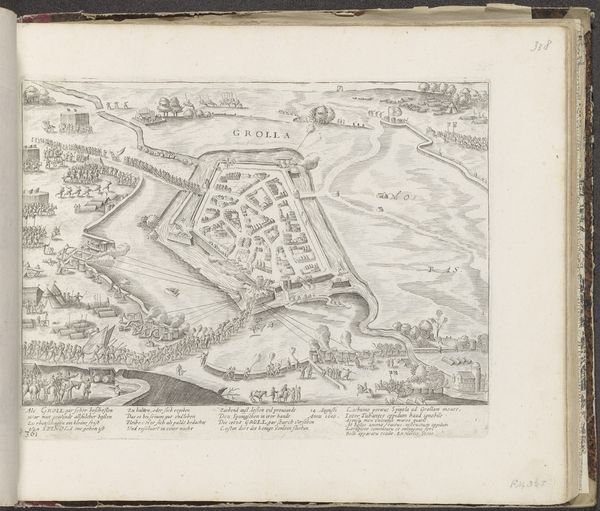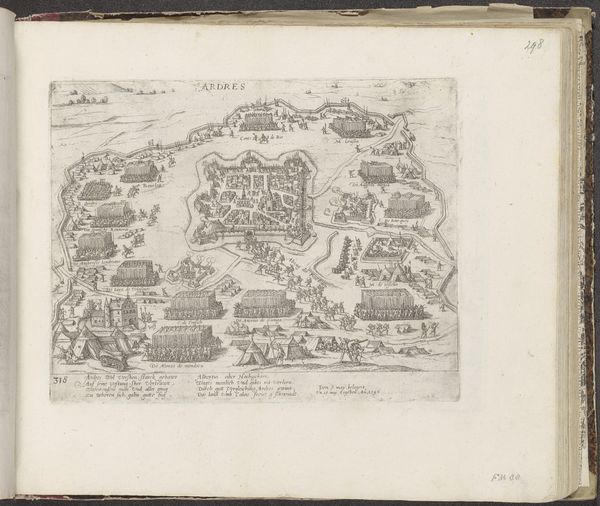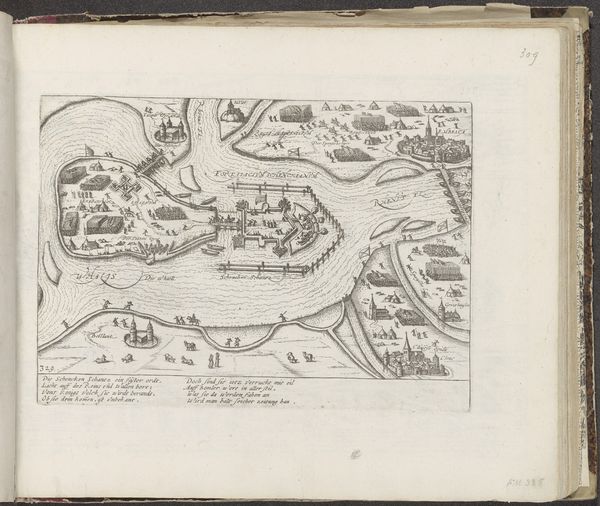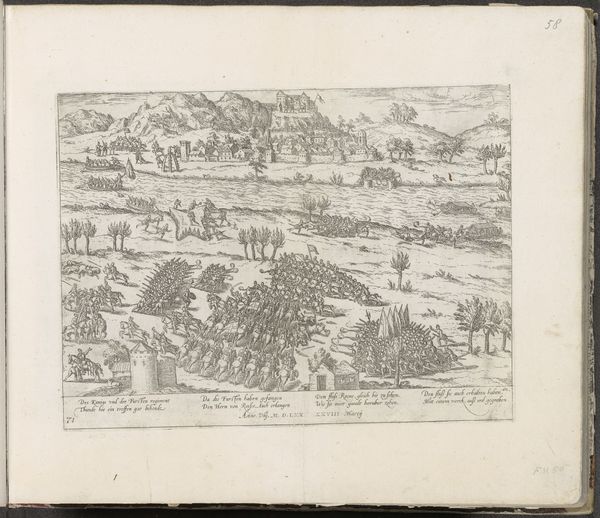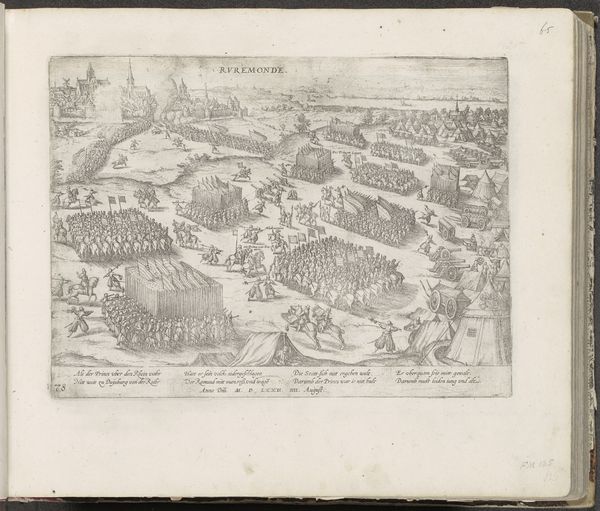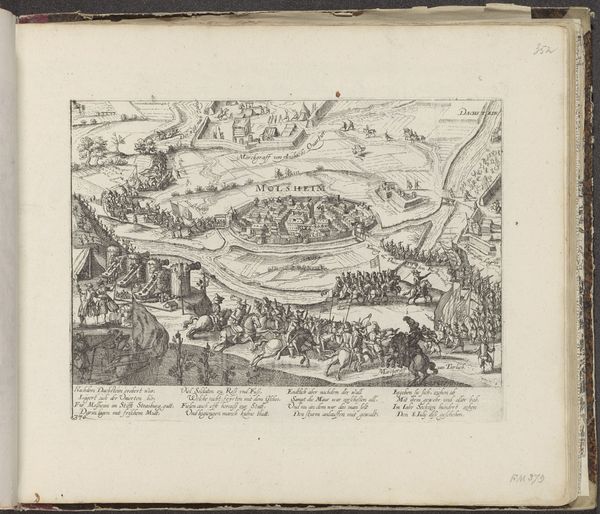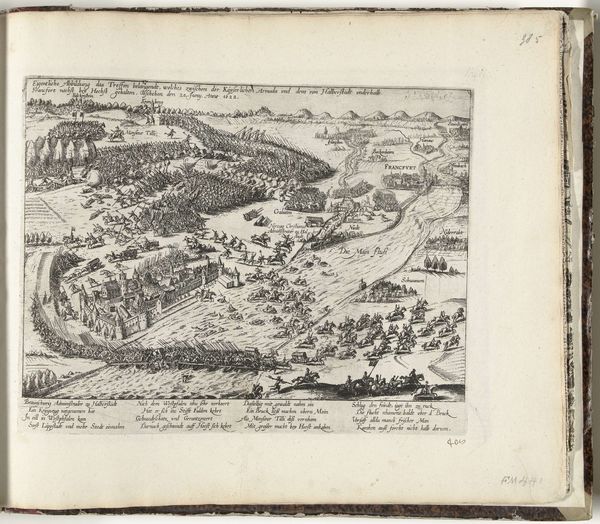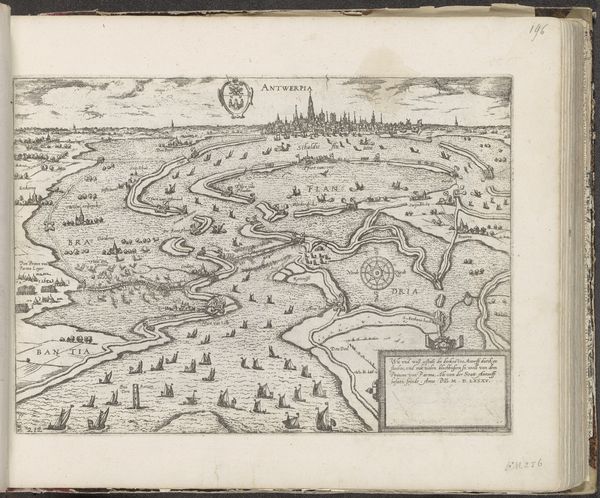
drawing, print, paper, ink, engraving
#
drawing
# print
#
landscape
#
mannerism
#
paper
#
ink
#
cityscape
#
history-painting
#
northern-renaissance
#
engraving
Dimensions: height 212 mm, width 260 mm
Copyright: Rijks Museum: Open Domain
Curator: Look at this fascinating engraving by Frans Hogenberg, created between 1591 and 1593. It depicts the relief of Knodsenburg. Editor: Immediately, I’m struck by how map-like it is, almost a bird's eye view laid out in meticulous detail, yet still feeling quite dramatic. Curator: Yes, it combines strategic information with vivid storytelling. Hogenberg captured not just the location but the movement and fervor of the battle. These prints, these engravings, served an important public function back then. Editor: It’s more than a battle plan; the strategic river placements coupled with massed armies remind me of a chess game played out on the land itself. I wonder, what did images of sieges symbolize for viewers in the late 16th century? Was it primarily about displaying military might? Curator: Oh, undoubtedly there’s an element of projecting strength, but it also served as crucial news dissemination. The Dutch Revolt was raging. These images were forms of early news media. It shaped the Dutch identity itself. These battle images are crucial documents that display evolving Dutch military strategies and tactics. Editor: Considering that perspective, those clustered figures, those miniature soldiers, take on a larger significance. Each is no longer just a man in arms, but a symbol representing the fortitude and resolve of the Dutch forces as a whole. There is incredible narrative density in those tiny engraved figures, especially when contextualized as information tools of their era. Curator: Precisely. And this particular print highlighting the relief— the liberation— of Knodsenburg offers a moment of hope and perseverance in a time fraught with conflict. Notice how the walls create almost an iconography. Editor: It is astonishing. Thinking about the repeated symbolism of cities and armies across diverse cultures, it becomes clear how crucial images were to define our allegiances and give tangible form to our deepest needs for order and security. It certainly brings into focus the importance of not underestimating the weight that images hold in the narratives we pass down. Curator: Indeed. This artwork shows how it informs military, political, and, by extension, social currents throughout its time. Editor: It shows also how we can better understand history by learning the meanings, purposes, and intentions behind its symbolic imagery.
Comments
No comments
Be the first to comment and join the conversation on the ultimate creative platform.
